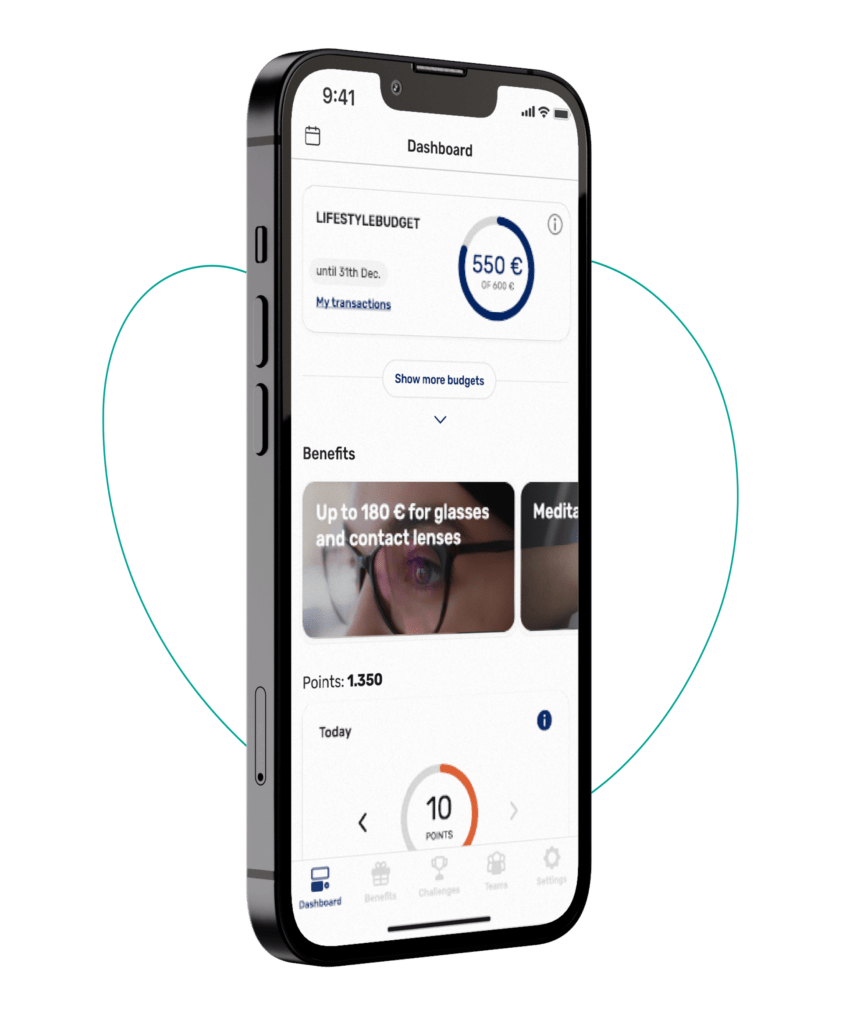
Nudging - Opportunities for health promotion and prevention
Nudging - Opportunities for health promotion and prevention

Dr. Mathias Krisam has been investigating how to implement modern health communication for years. The expert in the field of health behaviour change and managing director of “läuft GmbH” researches and publishes on the topic of nudging and its importance in health prevention in his capacity as a visiting scientist at the Charité Berlin.
What is nudging?
Nudging is a subfield of behavioural economics. Individual freedom of choice is not restricted. Nudges are used to try to influence behaviour through the targeted design of environmental factors – the decision architecture. The scientific foundation of the nudging approach is based on findings from economic, psychological and neuroscientific research. It makes use of the knowledge of how fast thinking works. As small and low-cost interventions in the environment, they subtly trigger people to choose the healthier behavioural option without imposing binding behavioural rules or decision-relevant economic incentives (Krisam et al., 2017). The term gamification is often used in connection with nudging. This refers to game design elements, for example points or leaderboards, in order to increase motivation and performance, for example in learning environments (Tolks et al., 2020). Krisam sees the transitions between nudging and gamification as fluid.
How do behaviours change through nudging?
People are creatures of habit. Thus, behaviour is often difficult to change. A much-cited study (LALLY et al., 2010) put the average time it takes to change to a routine at 66 days, although the fluctuations here are considerable and subject to many factors. Krisam explains: “When it comes to nudging, one’s own motivation and existing routines always play a role. In addition, you always have to pick people up at different points, exactly where they are at that moment“. In this context, he refers to the FOGG model, which views human behaviour as the sum of motivation, skills and triggers. The latter can be done through nudges. They then give people the final push in the right direction.
However, nudging is by no means the sole universal solution for replacing unhealthy habits with healthy routines. The expert clearly emphasises that the entire range of behavioural sciences must be used.
How is the acceptance of nudging in Germany?
In 2021, Krisam published his research results on whether and how the topic of nudging is accepted in this country. Almost 80 percent of the respondents have never heard of nudging. Contrary to the mostly negative media coverage, most citizens, once given a definition, are in favour of both the nudging concept and concrete measures. A popular example is the Nutri-Score as a nudging technique to promote healthier food choices. It is by no means irrelevant for the evaluation who is the originator of the nudge. Health experts are trusted very much and are therefore more accepted. In this context, statutory health insurers also receive a good acceptance rate. They should take the concept of nudging more into account, especially in the context of health promotion and prevention measures. However, external communication via independent experts is advisable.
Digital Nudging - What does nudging have to do with digitalisation?
Today, nudging is also mentioned in the same context as digital behavioural prevention. After all, fitness trackers and health apps are now part of everyday life and can support a healthy lifestyle. Examples of digital nudging are rewards, feedback, point systems or competitions against other teams. People tend to compare their performance, preferably with like-minded people or the peer group. So-called push notifications are also part of the nudging repertoire of digital prevention. The background: people are more likely to perform a behaviour if they receive the right hint at the right time or are reminded of the desired behaviour. Such nudging and gamification elements are sometimes found in solutions for insurance companies and health insurers, such as those offered by YAS.life. Here, motivating challenges, personalised analytics or quiz features are implemented in addition to a reward system (figure attached). These additional features led to an increase in fitness and exercise behaviour in 38 percent of the users after at least three months of app use. For Dr. Magnus Kobel, founder of YAS.life, this is not surprising:

“We have long been able to track the effect of individual nudges in great detail on the basis of our usage analyses, improve the offers for our customers and gain unique insights. This creates positive added value for everyone involved.”
Dr. Magnus Kobel, CEO of YAS.life
Conclusion: Nudging for an innovative health promotion of tomorrow
The context in which health-related decisions are made is important. If our everyday environment is designed in a way that promotes health, it is easier, sometimes even intuitive, to choose the alternative in favour of health. The nudging approach is based on findings from behavioural research. The “little nudge” is accepted by the population. Not least because of its immense prevention potential at comparably low cost, nudging should be more strongly included in the strategic orientation of the actors in the health sector in the future.
Digital Nudging with YAS.life: Health prevention for health insurers, insurance companies and other companies.
We are a leading European provider of digital bonus programmes. With our YAS app, we have developed an efficient health solution through digital nudging that we can quickly and easily adapt to the individual needs of insurers and companies. We have been working successfully with leading health insurance companies for years and have implemented over a dozen customised apps with thousands of daily users.
Our mission: #changehabits! We want to integrate health-conscious behaviour into the daily lives of our users. We achieve this by using gamification and rewards in our app solutions to motivate insured people to lead a healthier lifestyle.
All of our customers’ apps reward users with attractive rewards. We cooperate with established partners such as SportScheck, Garmin, Urban Sports Club and foodspring.
Behind this success is the founder and insurance expert Dr. Magnus Kobel and an international team of health and IT experts.
(1) Krisam, Mathias; von Philipsborn, Peter; Meder, Björn (2017). Nudging in der Primärprävention: Eine Übersicht und Perspektiven für Deutschland. Das Gesundheitswesen, 79(2), 117–123. doi:10.1055/s 0042-121598.
(3) Krisam, Mathias, and Eva Kuhn. “Das AEIOU-Modell: Gesundheitsverhalten mit Erkenntnissen der Verhaltenswissenschaften effektiv in der Praxis steuern.” Das Gesundheitswesen 84.06 (2022): 547-553. ● Lally, Phillippa, et al. (2010). “How are habits formed: Modelling habit formation in the real world.” European journal of social psychology 40.6: 998-1009.
Follow us for more news on bKV, employer branding and digital health

